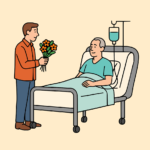Book Appointment Now

Virginia Henderson’s Need Theory
Virginia Henderson’s Need Theory has significantly influenced the way nurses care for their patients. By focusing on assisting individuals to meet their 14 basic needs, Henderson redefined the role of nursing to prioritize patient independence. This article provides an overview of Henderson’s theory, highlights its key components, and discusses its relevance in modern nursing practices.
Looking for nursing essay writing help on Virginia Henderson’s Need Theory? ![]()
What is Virginia Henderson’s Need Theory?
Virginia Henderson’s Need Theory is a nursing model that emphasizes helping patients achieve independence. According to Henderson, nurses fulfill their role by addressing both the physical and emotional needs of their patients, with a goal of empowering individuals to manage their health on their own. The theory identifies 14 basic needs, which cover essential aspects of a person’s well-being.
The 14 Basic Needs in Virginia Henderson’s Theory
Henderson’s model divides the needs into four categories: physiological, safety, psychosocial, and developmental needs. Each of these needs contributes to a holistic understanding of patient care.
1. Physiological Needs
These are the most fundamental needs required to sustain life and physical health:
- Breathing
- Eating and drinking
- Elimination of bodily wastes
- Movement and maintaining proper posture
- Sleep and rest
- Dressing and undressing appropriately for the environment
- Maintaining body temperature
2. Safety and Security Needs
Henderson highlighted the importance of ensuring that the patient feels secure, both physically and emotionally. This involves maintaining an environment that protects patients from injury and emotional distress.
3. Psychosocial Needs
Psychosocial needs emphasize emotional and social well-being. They include:
- Communicating effectively with others
- Self-awareness and emotional balance
- Spiritual needs, including participating in religious practices
4. Developmental Needs
Finally, Henderson’s theory acknowledges the lifelong nature of personal growth and development. These needs are met through education, work, and recreational activities, which contribute to a person’s overall well-being.
How Does Virginia Henderson’s Need Theory Relate to Nursing?
Virginia Henderson’s theory application to nursing practice places nurses in a critical role, guiding patients towards independence. The theory highlights that nursing care is not merely about treating disease but supporting the patient’s entire well-being. Here’s how this theory relates to modern nursing practices:
1. Holistic Care in Nursing
Henderson’s theory is a foundational example of holistic nursing theory. Nurses are encouraged to view the patient not just as someone with a medical condition, but as a whole person with physical, emotional, and social needs. This approach to patient-centered care ensures that all aspects of health, including spiritual and psychological well-being, are addressed.
2. Promoting Independence
One of the most critical aspects of Virginia Henderson’s nursing theory is the emphasis on independence. Nurses aim to support their patients in achieving self-sufficiency. This often means teaching patients how to manage their care post-discharge, from administering medications to maintaining healthy lifestyle habits.
3. Patient Advocacy
Henderson saw nurses as the patient’s advocate, supporting them not only in medical tasks but also in meeting personal needs like hygiene, nutrition, and emotional support. Virginia Henderson’s theory name underscores the idea that nurses serve as an intermediary between the patient and the healthcare system, ensuring that each of the 14 basic needs is met effectively.
4. Comprehensive Patient Assessments
Henderson’s theory encourages comprehensive patient assessments that go beyond medical evaluations. By considering each of the 14 basic needs, nurses can create personalized care plans that improve patient outcomes. For example, a nurse might assess whether a patient is receiving adequate nutrition, has access to spiritual care, or needs support in maintaining social connections.
Virginia Henderson’s Contributions to Nursing
Virginia Henderson’s contributions to nursing are immense. Her theory provides a clear, structured model that can be used in various healthcare settings. Whether in acute care hospitals, long-term care facilities, or community health environments, Henderson’s theory remains a central part of nursing education and practice.
Practical Application of Henderson’s Theory
In practice, nurses apply Henderson’s theory by:
- Assessing a patient’s ability to meet their own basic needs
- Supporting patients in areas where they struggle, such as mobility or personal hygiene
- Providing education and resources to encourage self-care after leaving the hospital
- Working with families to ensure that patients continue to receive care that addresses all their needs
Virginia Henderson theory example: A patient recovering from surgery may need assistance with mobility, personal hygiene, and nutrition. The nurse’s role is not only to help the patient with these tasks but to teach them how to perform these actions independently so that they can return to daily life.
The Relevance of Henderson’s Theory in Modern Nursing
Henderson’s model remains highly relevant today, as Virginia Henderson nursing theory scholarly articles continue to explore its applications in modern healthcare. Nurses today, much like in Henderson’s time, are tasked with addressing the whole person, not just the illness. The emphasis on promoting independence and providing holistic care aligns with contemporary healthcare models that prioritize patient-centered care.
Henderson’s Theory and Nursing Education
Henderson’s Need Theory is taught in nursing programs across the globe. Students often refer to Virginia Henderson theory PPT presentations and Virginia Henderson 14 basic needs PDF documents as part of their studies. The framework offers a comprehensive guide to nursing practice and serves as a reference for clinical decision-making.
Virginia Henderson’s Need Theory transformed nursing by framing it as a profession that goes beyond medical interventions to encompass a person’s entire well-being. By addressing the 14 basic needs, nurses can foster independence and improve patient outcomes. Henderson’s contributions to nursing theory continue to influence modern nursing practices today, particularly in fostering holistic, patient-centered care and promoting self-sufficiency in health management. As healthcare evolves, Henderson’s principles of supporting individuals through both physical and emotional recovery remain as relevant as ever.
Also read:
- DQ Henderson believed nurses have the responsibility to assess the needs of the individual patient, help individuals meet their health needs, and provide an environment in which the individual can perform activities unaided
- NR 501 Week 6 Application of Theory Paper Assignment – Nursing Theory Virginia Henderson Needs Theory







